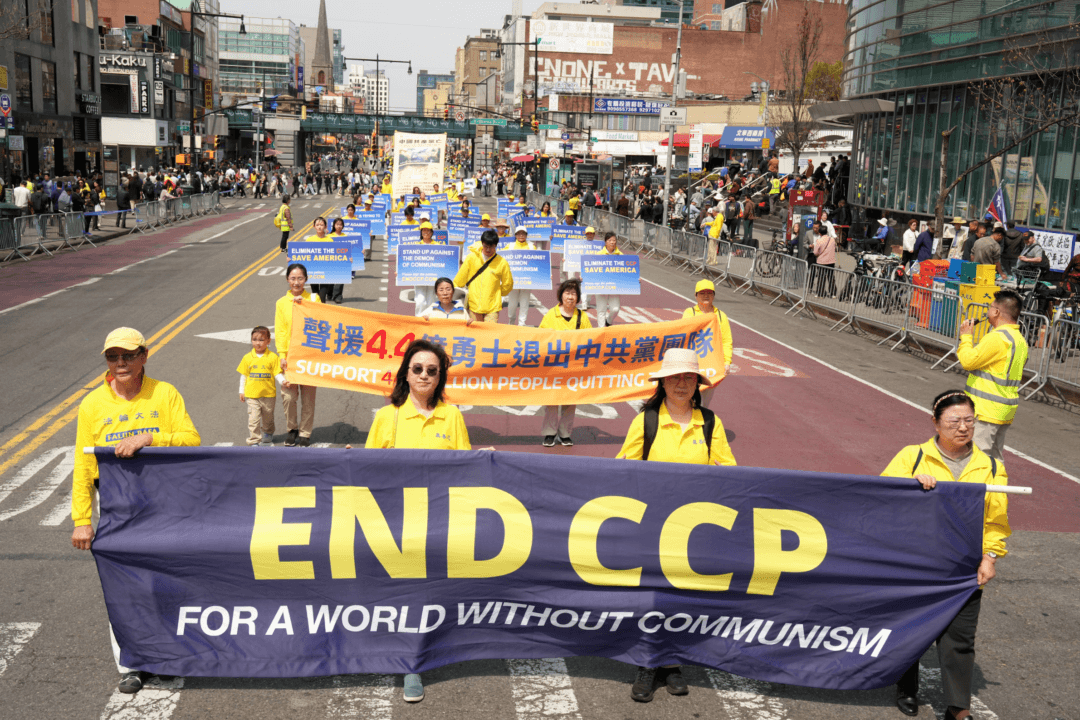Inside a fenced-in section of asphalt and uneven brick on the Lower East Side lies a Luther Gulick Playground, which remains well used by the neighboring pre-kindergarteners and families despite the almost desolate surroundings.
But the park the playground sits in has a strong community following, and earlier this year they secured funding to make capital improvements to the park. Now the playground, along with 34 other parks in the city, are getting major improvements, courtesy of the city’s new plan to introduce park equity.
While some parks in the city are considered gems, others have fallen to a state of disrepair.
Mayor Bill de Blasio said 35 community parks will get $173 million in capital funding as part of the new Community Parks Initiative, stopping short of introducing mandatory partnerships between well-funded conservancies and neglected parks—a measure he supported during his campaign.
At a press conference, he said he would eventually ask for conservancies to contribute, according to the Observer.
“From children and parents to athletes and students, every New Yorker deserves access to clean and safe public parkland—no matter what neighborhood they live in,” de Blasio said in a press release.
The $173 million investment, which includes funding from the Department of Environmental Protection for green infrastructure improvements, is just a short-term fix to kick off a long-term reform of the city’s park system, according to de Blasio. It’s the first phase of the five-borough, sustainable park system the city released called NYC Parks: Framework for an Equitable Future.
Partnership
The key to successful parks is community buy-in, advocates say.
Building communities around parks is the central focus of how City Parks Foundation (CPF) works.
“Equity in parks is what we’ve been for, all along,” CPF executive director Alison Tocci said in a previous interview.
Contrary to popular belief, despite the 750 parks groups CPF works with, it is not a city agency. CPF, however, will play a big part in the equitable parks plan.
NYC Parks and CPF will collaborate on the Partnership for Parks program to engage people in the community and help them organize or proceed in bettering their neighborhood parks.
Advocates praised the administration’s acknowledgement that this was the start to a long-term solution.
“It isn’t just a quick fix: the program lays the groundwork for community building in many areas of the city that need it most.”
“We will work to invest in communities with the greatest need and to create thriving public spaces to enhance the livability of under-resourced neighborhoods,” said Parks Commissioner Mitchell Silver in a press release.
Silver, who previously was Chief Planner in Raleigh, N.C., had spearheaded a plan for an equitable Raleigh.
Mark Levine, chair of the city council committee on parks and recreation, had pushed for more investment in maintenance of city parks.
“This plan reverses years of underinvestment in neighborhood parks in the city’s low-income communities. And it avoids the mistake—so common in the past—of focusing on capital spending without adequate attention to the less sexy but still critical funding of park maintenance,” Levine said in a press release. “I am incredibly proud that the mayor and the council have come together on a plan that will deliver for New Yorkers who, until now, have lacked access to truly great public spaces.”
See the map of parks to receive capital improvements:
Green Equity
On the same day, several council members rallied for an equitable way to manage the 35,000 tons of garbage the city produces every single day.
“For communities like the one I represent, there is no truth to the saying, one man’s trash is another man’s treasure,” said council member Stephen Levin in a press release. “North Brooklyn, the South Bronx, and Southeast Queens have been forced to bear the burden of the majority of the city’s waste for too long and have only suffered its consequences.”
Levin and council member Antonio Reynoso introduced a bill that would cap the permitted waste management capacity of each community district, with the purpose of decreasing capacity in overburdened districts.
Currently, most of the stations in the city are located in Brooklyn and South Bronx.
There are four planned Marine Transfer Stations (MTS) planned under the city’s adopted Solid Waste Management Plan (SWMP) from 2006.
Proponents of the plan say there should be a more equitable distribution of the stations, and the trucks that accompany them. There is vocal opposition as well.
Communities on the Upper East Side and Southwest Brooklyn have rallied to stop the creation of waste transfer stations in their neighborhoods, citing a litany of safety concerns. The site in Southern Brooklyn sits atop toxic chemicals that would cause health problems if drilling commences, elected officials said.
The site on the Upper East Side is across the street from a park where children frequent.
A Full List of Parks to Receive Capital Improvements:
Bronx
Hunts Point Playground
Little Claremont Park
Longfellow Garden
Lyons Square Playground
Melrose Commons Site 32
Playground 52
Ranaqua Park
Saw Mill Playground
Seabury Park
Brooklyn
Jesse Owens Playground
Saratoga Ballfields
Stockton Playground
Stroud Playground
Ten Eyck Playground
Thomas Boyland Park
Manhattan
Carmansville Playground
Henry M. Jackson Playground
James Weldon Johnson Playground
Luther Gulick Playground
Martin Luther King Playground
Playground 103 CIII
Sol Lain Playground
St. Nicholas Playground North
White Playground
Queens
Astoria Heights Playground
Bowne Playground
Corona Mac Park
Grassmere Playground
Rockaway Community Park/Conch Playground
Van Alst Playground
Staten Island
Arrochar Playground
DeMatti Playground
Grandview Playground
Levy Playground
McDonald Playground





